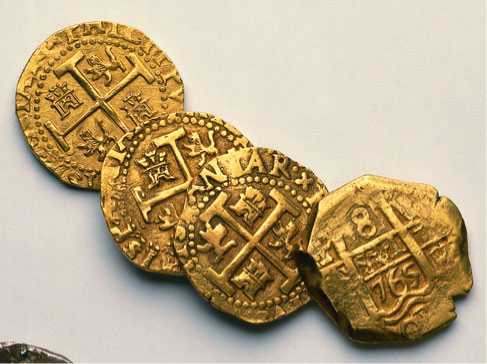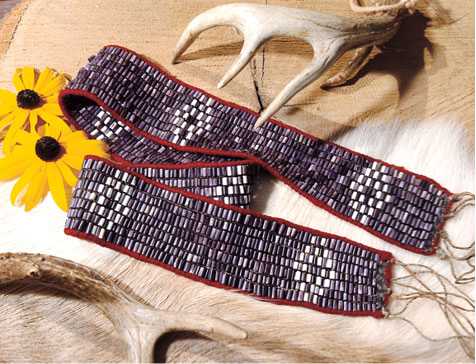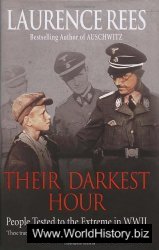Increase Mather, a puritan leader, worried that “Christians in this Land have become too like unto the Indians.” Little wonder, he observed, that God had “afflicted us by them” through disease and other trials. Yet Mather’s comments suggested that interaction between European settlers and the native peoples was characteristic of life in all the colonies. Interaction is the key word in this sentence. The so-called Columbian Exchange between Indian and European was a two-way street. The colonists learned a great deal about how to live in the American forest from the Indians: the names of plants and animals (hickory, pecan, raccoon, skunk, moose); what to eat in their new home and how to catch or grow it; what to wear (leather leggings and especially moccasins); how best to get from one place to another; how to fight; and in some respects how to think.
The colonists learned from the Indians how best to use many plants and animals for food and clothing, but they would probably have discovered most of these if the continent had been devoid of human life when they arrived. Corn, however, the staple of the diet of agricultural tribes, was something the Indians had domesticated. Its contribution to the success of English colonization was enormous.
The colonists also took advantage of that marvel of Indian technology, the birchbark canoe. An early explorer, Martin Pring, brought one back to England in 1603; it was seventeen feet long and four feet wide and capable, according to Pring, of carrying nine full-grown men. Yet it weighed “not at the most above sixtie pounds,” a thing, Pring added, “almost incredible in regard to the largenesse and capacitie thereof.”
For their part, the Indians adopted European technology eagerly. All metal objects were indeed of great usefulness to them, although the products and tools that metals replaced were neither crude nor inefficient in most cases. (A bowman could get off six times as many shots in a given time as a seventeenth-century soldier armed with a firelock, and would probably hit the target more frequently.)
The fur trade illustrates the pervasiveness of Indian-European interaction. It was in some ways a perfect business arrangement. Both groups profited. The colonists got “valuable” furs for “cheap” European products, while the Indians got “priceless” tools, knives, and other trade goods in exchange for “cheap” beaver pelts and deerskins. The demand for furs caused the Indians to become more efficient hunters and trappers and even to absorb some of the settlers’ ideas about private property and capitalist accumulation. Hunting parties became larger. Farming tribes shifted their villages in order to be nearer trade routes and waterways. In some cases tribal organization was altered: Small groups combined into confederations in order to control more territory when their hunting reduced the supplies of furs nearer home. Early in the seventeenth century, Huron Indians in the Great Lakes region, who had probably never seen a Frenchman,


Indians were befuddled by the Europeans' craving for gold, such as these Spanish coins (left). Europeans were similarly baffled by the Indians' attraction to wampum, seashells that were drilled, placed on a string, and formed into belts, such as this eighteenth-century Oneida belt (right). No negotiations or trade with many Indian tribes could commence without gifts of wampum. The gold coins are imprinted with the Christian cross; purple beads, the most valuable, were also suffused with spiritual import among Indians.
Owned French products obtained from eastern tribes in exchange for Huron corn.
Europeans and Indians became interdependent. The colonists relied on Indian labor and products. Indians relied on European guns and metal tools. Some Indians became so enamored of European knives and metal tools that they forgot the stoneworking skills of their Paleo-Indian ancestors. They now depended on Europeans for those products, much as the colonists themselves depended on Indian corn, potatoes, and other crops.
Although the colonists learned much from the Indians and adopted certain elements of Indian culture and technology eagerly, their objective was not to be like the Indians, whom they considered the epitome of savagery and barbarism. The constant conflicts with Indians forced the colonists to band together and in time gave them a sense of having shared a common history. Later, when colonists broke away from Great Britain, they used the image of the Indian to symbolize the freedom and independence they sought for themselves.
In sum, during the first 200-odd years that followed Columbus’s first landfall in the Caribbean, a complex development had taken place in the Americas. Sometimes these alien encounters were amiable, as Indians and colonists exchanged ideas, skills, and goods; while sometimes the encounters were hostile and bloody, with unimaginable cruelties inflicted by and on both sides. But the coming together of Indians and European settlers was mostly characterized by ambiguity and confusion, as markedly different peoples drew from their own traditions to make sense of a new world that little resembled what they knew. In time, their world would become our own.
Christopher Columbus’s fateful voyage brought alien worlds together, an encounter characterized by mutual incomprehension. In consequence, millions of American Indians perished, millions of Europeans immigrated to the Americas, and millions of Africans were sent there as slaves. The cultures of all peoples— food and diet, religious beliefs and practices, and modes of sustenance and social organization— changed in fundamental ways. During that fateful first century, American Indians, Europeans, and Africans interacted continuously—negotiating, fighting, trading, and intermarrying—without really understanding one another.




 World History
World History









